Food availability is the primary reason birds leave their homes during the winter. Many northern regions don’t have flying insects or nectar available during the colder months, so birds travel south to warmer regions with abundant resources. The birds that stay during the winter usually switch their diet from insects and fruit to mainly seeds, dried fruit, and whatever else they can find. Check out these 20 birds that spend their winters in Washington, including what they eat to survive.
1. American Crow
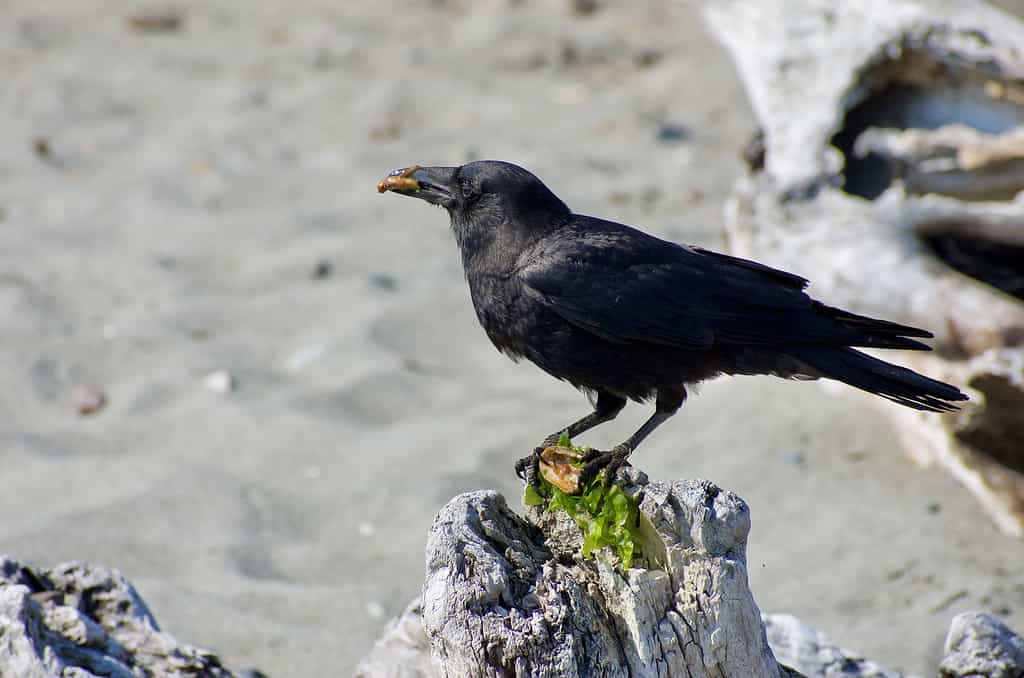
American crows survive on nuts, seeds, and garbage during the winter.
©iStock.com/DanielLacy
The American crow is a widespread species across Washington. It lives in most habitats of the region, except unbroken coniferous forest. Crows are opportunistic and will eat what’s available during the winter, including nuts, bird seed from feeders, and even human garbage.
2. Dark-Eyed Junco
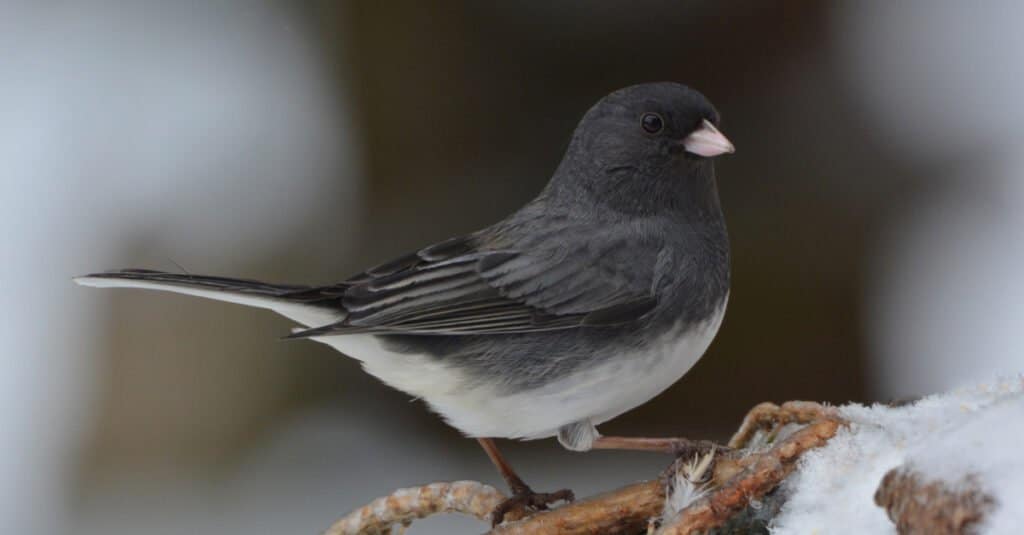
The female dark-eyed junco has more muted coloring than the male.
©C. Hamilton/Shutterstock.com
These dark birds are common in Washington’s western lowlands during the winter. However, they can still occupy patchy spots in eastern parts of the state. While they primarily eat insects during summer, dark-eyed juncos survive on seeds, weeds, berries, and grasses in the cold months.
3. Pine Siskin

Pine siskins weigh 0.4 to 0.6 ounces and measure 4.3 to 5.5 inches long.
©Menno Schaefer/Shutterstock.com
These birds are permanent residents of Washington, where they primarily reside throughout the state’s lowlands in forests, weedy fields, and thickets. Pine siskins mainly eat seeds during winter, including those from thistle, birch, spruce, red alder, dandelions, sunflowers, and ragweed.
4. Song Sparrow
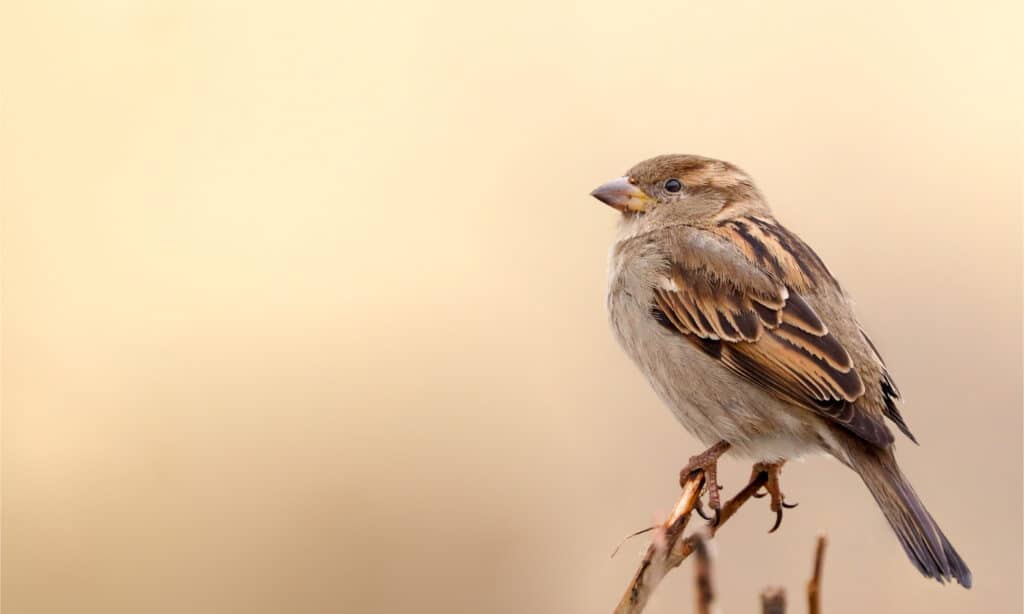
Song sparrows gather in large flocks in Eastern Washington.
©fewerton/Shutterstock.com
The song sparrow can be found throughout the state, but they gather in large flocks in Eastern Washington, where you can see them foraging on the ground or at feeders. Their winter diet consists of grass and weed seeds.
5. Downy Woodpecker
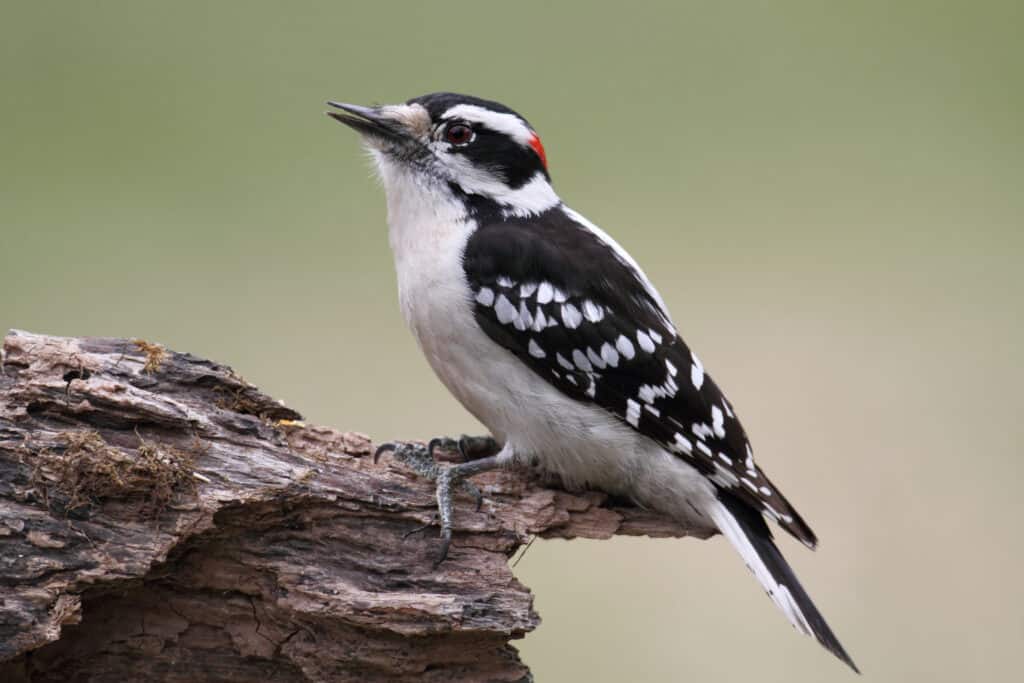
Downy
woodpecker
s are darker in the western part of Washington.
©Steve Byland/Shutterstock.com
These woodpeckers reside in many habitats in Washington, from open woodlands and orchards to parks and backyards. Downy woodpeckers in western Washington have darker plumage than those in eastern Washington. They get by during the winter by scavenging for berries, grains, and acorns.
6. Peregrine Falcon
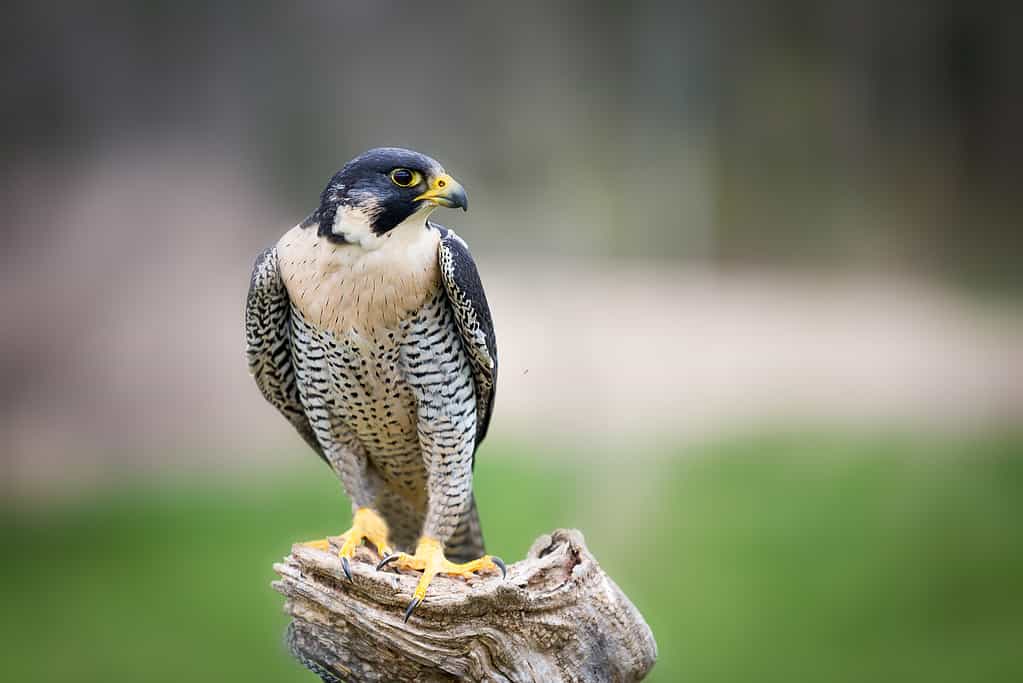
The peregrine falcon’s weight and wingspan allow them to reach high speeds and capture prey quickly.
©emranashraf/iStock / Getty Images Plus via Getty Images
These majestic and speedy falcons can be found throughout the state, where they live year-round. They live and breed in higher elevations along rivers. Peregrine falcons kill and eat other birds in every season. Their favorites are doves, pigeons, waterfowl, and small songbirds.
7. Black-Capped Chickadee
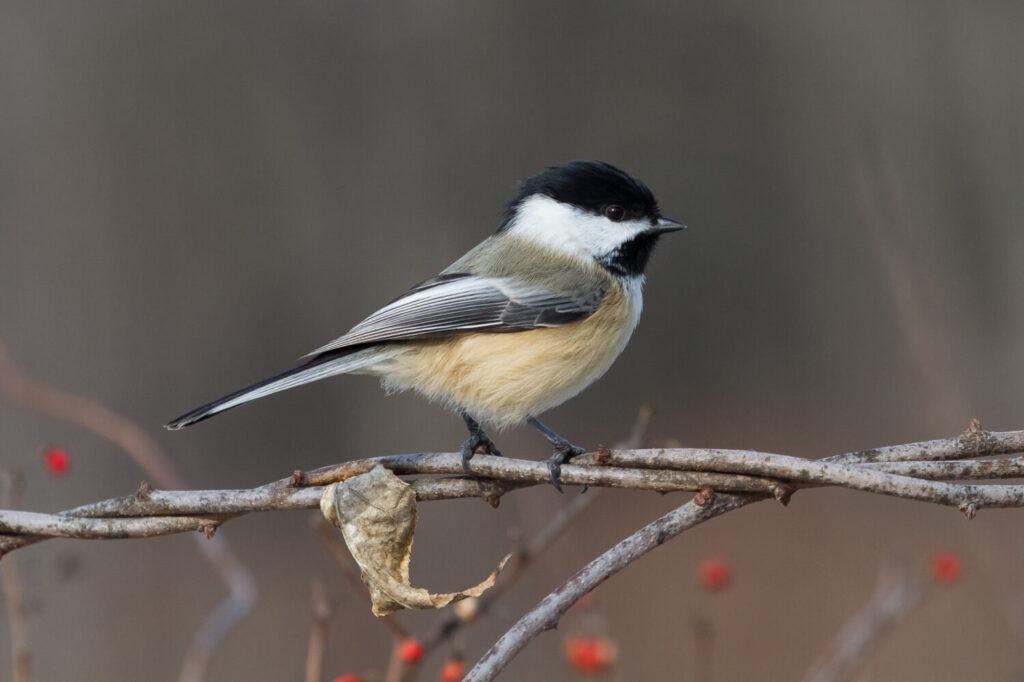
Black-capped
chickadee
are tiny birds found across Washington.
©Paul Roedding/Shutterstock.com
These familiar backyard birds are some of the most beloved across Washington. With their tiny, chubby appearance, black-capped chickadees bring joy to Washington birders. In winter, they typically survive on seeds, small fruits, and berries.
8. Horned Lark

Horned larks live on grasslands, fields, and prairies.
©mirceax/iStock via Getty Images
South of the Puget Sound, you can find horned larks on prairies and grasslands. You can also spot them on agricultural fields, seasonal wetlands, and near the coast. During the winter, horned larks gather in large flocks in feedlots and fields to feed on waste grain.
9. Bald Eagle

Bald eagles live near marine environments.
©PHOTOOBJECT/Shutterstock.com
While bald eagles inhabit areas across the state, you are most likely to find them west of the Cascade Range near marine environments, like lakes and reservoirs. Bald eagles feed on fish and waterfowl near open water throughout the year.
10. Mallard
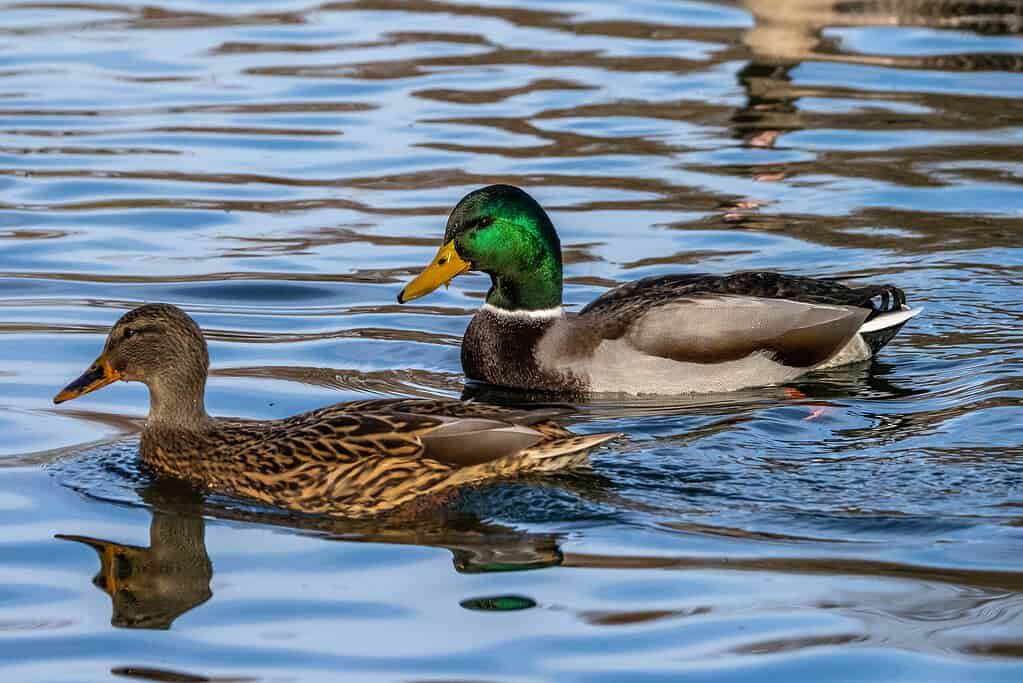
Male mallard ducks have bright green heads and brown and cream feathers on their bodies.
©iStock.com/Rudolf Ernst
The mallard is the most common duck you will find in Washington state. This species inhabits almost every lowland wetland throughout the state, including during the winter. During the cold months, these ducks consume seeds and aquatic vegetation.
11. Stellar’s Jay

Stellar’s jays sometimes move from higher to lower elevations during winter
©Nigel Jarvis/Shutterstock.com
The Stellar’s jay is a resident bird of Washington, although some populations migrate during spring and fall, but only to lower or higher elevations. During winter, these jays eat pine seeds, nuts, acorns, berries, and wild fruits.
12. American Robin
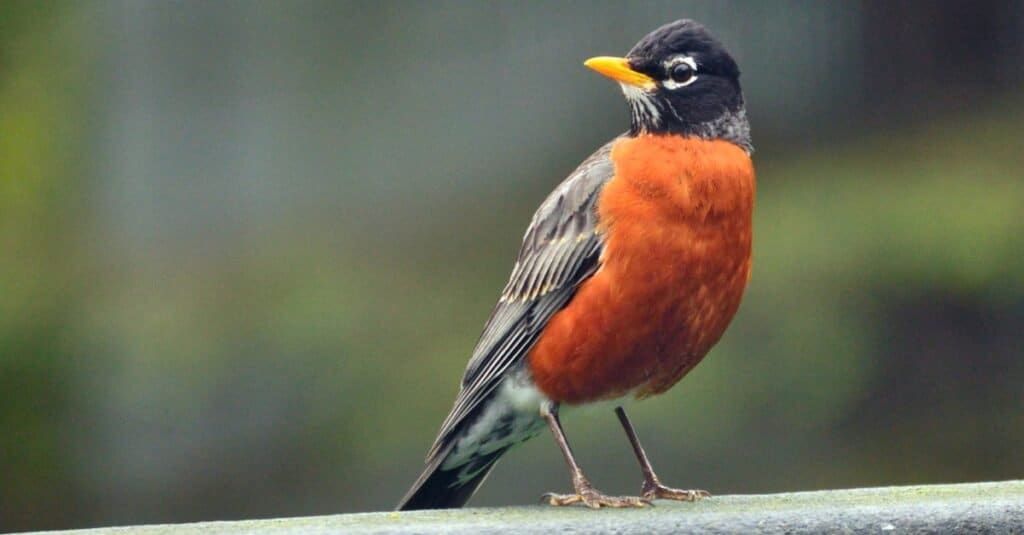
The male
American robin
is generally the last bird heard singing at sunset.
©iStock.com/PhotosByMSA
American robins are some of the most widespread and familiar birds across the country, including Washington. You can find these parks in many habitats, such as parks, gardens, farms, and woodland edges. During the winter, these robins eat berries and various fruits from shrubs and trees.
13. Red-Breasted Nuthatch
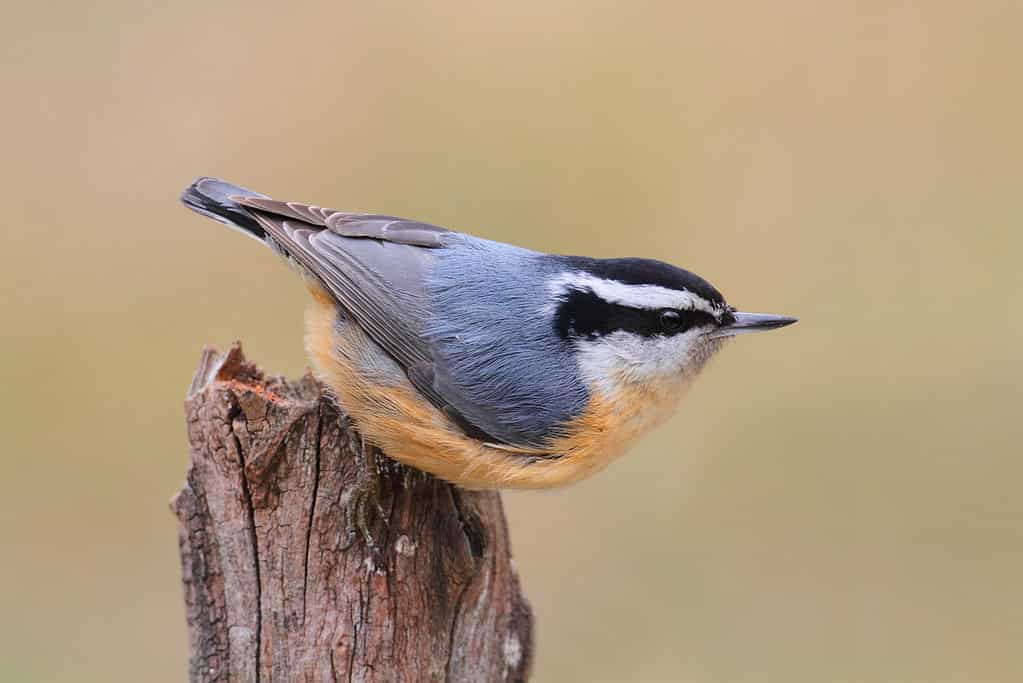
Red-breasted nuthatches eat conifer seeds during winter.
©iStock.com/SteveByland
These birds are a common sight in forested areas throughout Washington and are most abundant in old-growth and mature forests with dead trees. Their winter diet includes conifer seeds.
14. Spotted Towhee

The Spotted Towhee lives in forested lowland areas.
©iStock.com/jamesvancouver
Spotted towhees live in shrubby thickets and wetlands in lowland areas throughout Washington. In eastern Washington, you can find them near forest edges and riparian areas. During the fall and winter, spotted towhees forage on seeds, oats, berries, and acorns.
15. Northern Flicker

Northern flickers are large woodpeckers.
©abriggs21/iStock via Getty Images
The northern flicker is a woodpecker species and one of the most common in Washington. These large woodpeckers live year-round in state, where you’ll find them in woodlands, forest edges, backyards, and parks.
16. Canada Goose
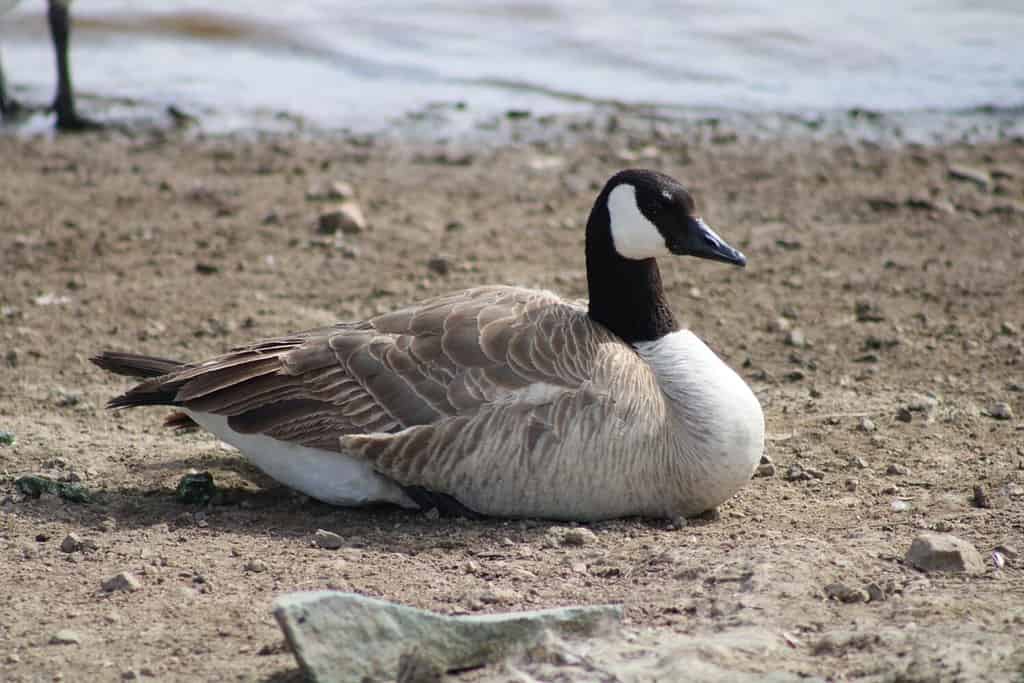
Some Canada geese migrate while others stay year-round.
©Charlotte Evelyn/Shutterstock.com
The Canada goose is one of the most familiar birds in Washington and across the country. These common geese have two populations in the state – those that migrate and those that don’t. Nonmigrating geese survive the winter by visiting waste grain areas with corn, wheat, and soybeans.
17. Bufflehead
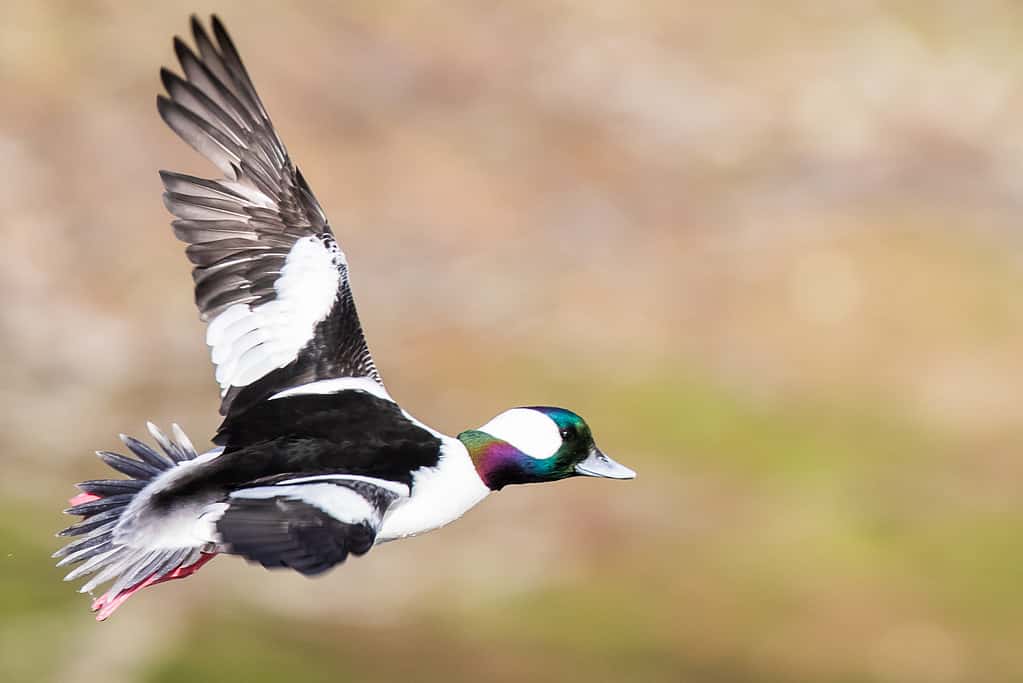
One of North America’s smallest ducks, the Bufflehead is a common diver duck.
©Jeff Huth/iStock via Getty Images
The bufflehead is the smallest diving duck in Washington and can be easily distinguished from other species due to its small size and rainbow colors. You can find buffleheads near ponds and small lakes in coniferous or mixed forests. During the fall and winter, these ducks consume aquatic plants and large quantities of mollusks.
18. European Starling
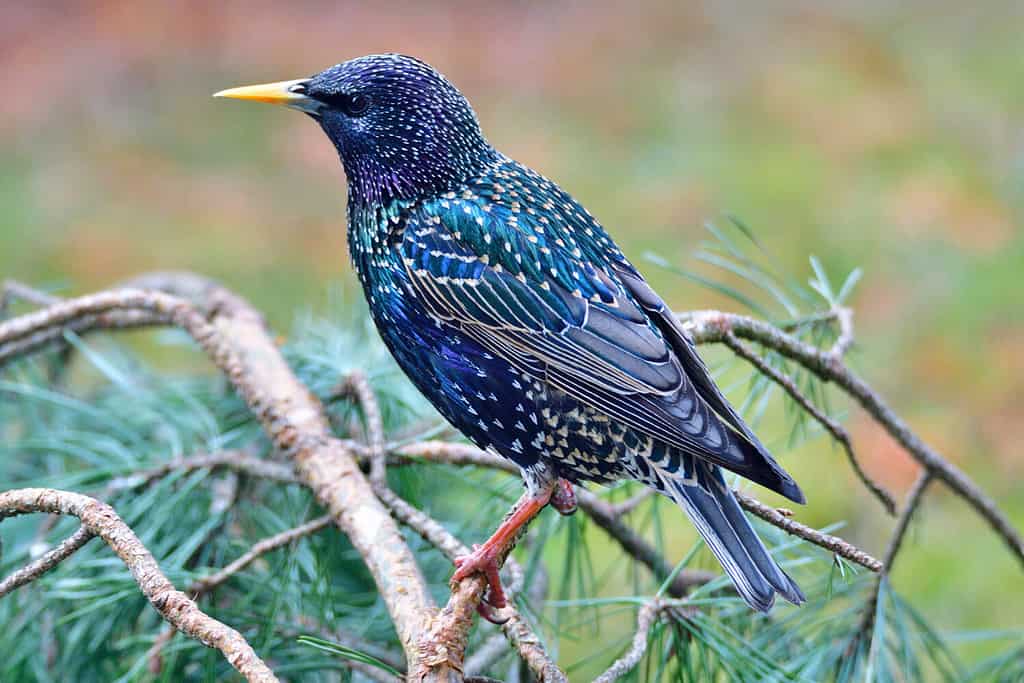
European starlings live in many habitats.
©Karin Jaehne/Shutterstock.com
The European starling lives year-round in Washington, where you will find it in lowland areas throughout the state. These birds live in cities, suburban areas, and farms, and they forage on fields, pastures, lawns, and parks. European starlings eat a variety of seeds, fruits, and berries during the winter.
19. House Finch
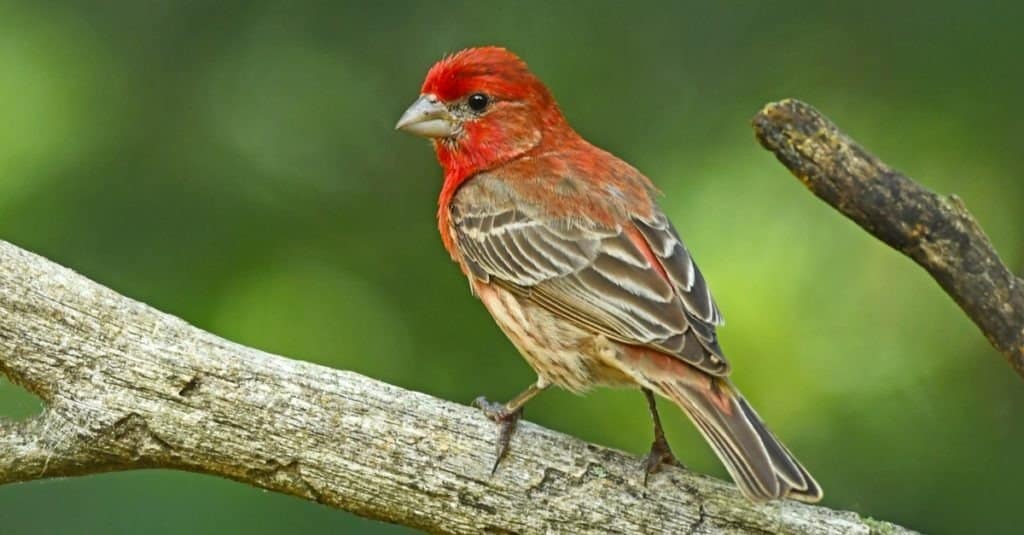
House finch
es are common at backyard feeders.
©Brian A Wolf/Shutterstock.com
While you won’t find house finches in montane forests or non-agricultural fields, you can spot them near many human habitations in cities and suburbs. House finches are very common birds throughout Washington, and they are easy to spot at backyard feeders. They get their seed diet from feeders or in the wild, where they prefer black oil sunflower, nyjer, and hulled sunflower seeds.
20. Double-Crested Cormorant

The double-crested cormorant dives underwater and chases its prey.
©iStock.com/BrianLasenby
Double-crested cormorants are familiar birds along western Washington’s coast and nearby inland waters. They are common along rocky coastal areas and islands, where they lay their nests. These birds spend their time in shallow water and feed on fish, crustaceans, amphibians, and some insects. They primarily eat fish, though, and catch their prey by diving underwater.
A Summary of the 20 Birds That Spend Their Winters in Washington
| Number | Birds That Spend Their Winters in Washington |
|---|---|
| #1 | American crow |
| #2 | Dark-eyed junco |
| #3 | Pine siskin |
| #4 | Song sparrow |
| #5 | Downy woodpecker |
| #6 | Peregrine falcon |
| #7 | Black-capped chickadee |
| #8 | Horned lark |
| #9 | Bald eagle |
| #10 | Mallard |
| #11 | Stellar’s jay |
| #12 | American robin |
| #13 | Red-breasted nuthatch |
| #14 | Spotted towhee |
| #15 | Northern flicker |
| #16 | Canada goose |
| #17 | Bufflehead |
| #18 | European starling |
| #19 | House finch |
| #20 | Double-crested cormorant |
The photo featured at the top of this post is © Walter Coate/Shutterstock.com
Thank you for reading! Have some feedback for us? Contact the AZ Animals editorial team.







